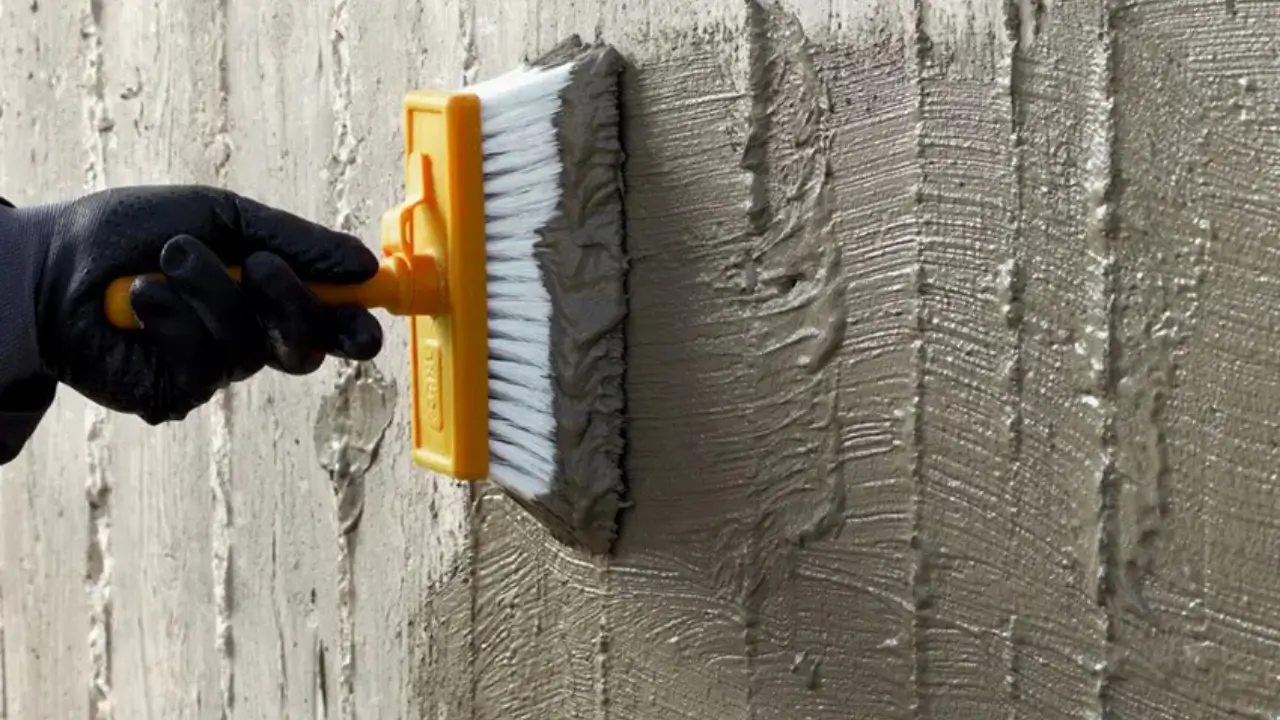
Waterproofing is a critical component in extending the lifespan of structures and protecting indoor environments from moisture damage. Among the most commonly used materials in this field is waterproofing mortar—a versatile and highly effective solution within the construction chemicals segment.
But what exactly is waterproofing mortar? Where is it used, and what should professionals consider during application? This guide covers all the key details.
What Is Waterproofing Mortar?
Waterproofing mortar is a cement-based, polymer-modified construction chemical, typically produced as a two-component system. Once applied, it forms an elastic, watertight membrane that prevents water from penetrating structural elements.
It is widely used in areas such as basement retaining walls, balconies, terraces, wet rooms (e.g., bathrooms), water tanks, elevator shafts, and many other environments prone to water exposure.
Key Features of Waterproofing Mortar
- Water Impermeability: Its primary function is to make the surface impermeable to water.
- Excellent Adhesion: Offers strong bonding to mineral substrates like concrete, plaster, and brick.
- Elasticity and Flexibility: Tolerates structural movement, surface cracks, and minor deformations. (Elasticity is especially enhanced in two-component products.)
- Breathability: Allows water vapor to escape while blocking liquid water, preventing trapped moisture beneath the surface.
- Resistance to Freeze-Thaw Cycles: Durable under varying climatic conditions.
- Positive and Negative Pressure Resistance: Specialized formulations are available for both internal (negative) and external (positive) water pressure scenarios.
Common Areas of Use
Waterproofing mortars offer a wide range of applications across both residential and commercial construction:
1. Foundation Walls and Retaining Walls
Used on structures in direct contact with soil to prevent groundwater infiltration.
2. Balconies and Terraces
Protects exposed areas from rain and snow damage; compatible with ceramic tile coverings.
3. Wet Rooms (Bathrooms, Toilets, Kitchens)
Applied beneath ceramic finishes to prevent water from leaking to lower levels.
4. Water Tanks and Pools
With the right certification, waterproofing mortars can be used safely in contact with potable water for both internal and external waterproofing.
5. Elevator Pits
A vital solution in areas with high groundwater levels, where water ingress poses a significant risk.
6. Planters and Landscaping Features
Prevents moisture and water damage to concrete elements in contact with soil.
Types of Waterproofing Mortars
Depending on the application requirements, waterproofing mortars are available in several formulations:
1. Single-Component Mortars
Cement-based dry powder mixed with water. Suitable for stable, non-cracking substrates.
2. Two-Component Mortars
Comprises a cement-based powder and a polymer-based liquid component. When mixed, the result is a more elastic, crack-bridging membrane ideal for demanding areas such as terraces and bathrooms.
3. Highly Elastic Mortars
Enhanced with elastomers for superior flexibility. Recommended for dynamic substrates and areas prone to structural movement.
4. Crystalline Waterproofing Mortars
Designed for negative water pressure conditions. These penetrate the concrete matrix, forming insoluble crystals that block water pathways internally.
Dryfix Crystallize is a single-component, deeply penetrating crystalline waterproofing compound formulated to resist both positive and negative water pressure. It integrates with the cementitious substrate, forming a crystalline structure that prevents water ingress from within.
Application Guide: Step-by-Step
Choosing the right product is only half the equation—proper surface preparation and application are equally critical. Here’s how to apply waterproofing mortar effectively:
1. Surface Preparation
- Ensure the substrate is clean and free of dust, oil, paint, curing agents, and other contaminants.
- Open and repair any visible cracks.
- Active water leaks must be stopped, and the surface must be adequately dry.
2. Priming (Optional)
- In some cases, a water-based primer or diluted version of the mortar can be applied to improve adhesion.
3. Mixing
- Combine the powder and liquid components according to the manufacturer’s technical data sheet.
- Mix using a mechanical stirrer until a smooth, lump-free consistency is achieved.
- The mixture should be used within 30–40 minutes.
4. Application
- Apply using a brush, trowel, or spray machine.
- Typically applied in two coats.
- Allow the first coat to dry before applying the second in a crosswise direction.
- Maintain an interval of 4–6 hours between coats.
5. Curing
- Protect from rain, frost, and direct sunlight for at least 24 hours post-application.
- Keep the surface moist for 3 days to aid curing and enhance performance.
Common Application Mistakes
- Inadequate surface cleaning
- Incorrect mixing ratios
- Applying only a single coat
- Not observing the correct waiting time between coats
- Installing ceramic tiles immediately after application
Such mistakes can compromise the integrity of the waterproofing system. Always follow the technical data sheet to ensure long-term performance.
How to Choose the Right Waterproofing Mortar
Ask the following questions when selecting a product:
- Positive or negative pressure? Not all products are suitable for negative water pressure.
- Is flexibility needed? Elastic mortars are required for surfaces with structural movement.
- Will tiles be applied over it? Ensure compatibility with tile adhesives and good surface adhesion.
- Will it contact drinking water? Use products certified for potable water safety.
The Formula: Right Product + Correct Application = Long-Lasting Waterproofing
Waterproofing mortar is a trusted, high-performance, and cost-effective solution for both professionals and DIY users. However, product performance depends not only on formulation but also on proper substrate preparation and application techniques.
At Dryfix, we supply high-performance waterproofing mortars and provide technical support to help applicators achieve reliable results. If you’re looking to choose the ideal waterproofing solution or need expert guidance, feel free to reach out to us.
